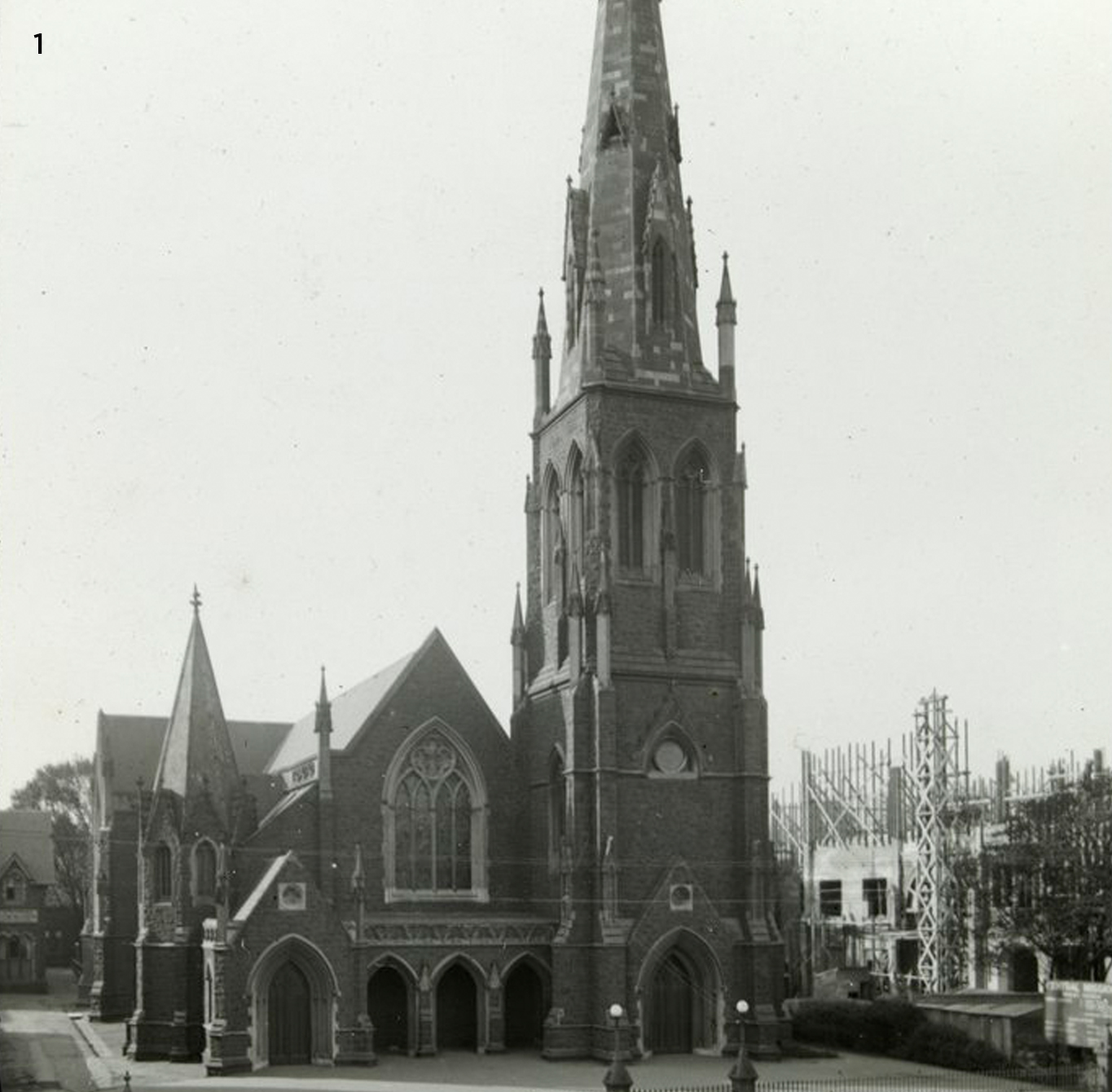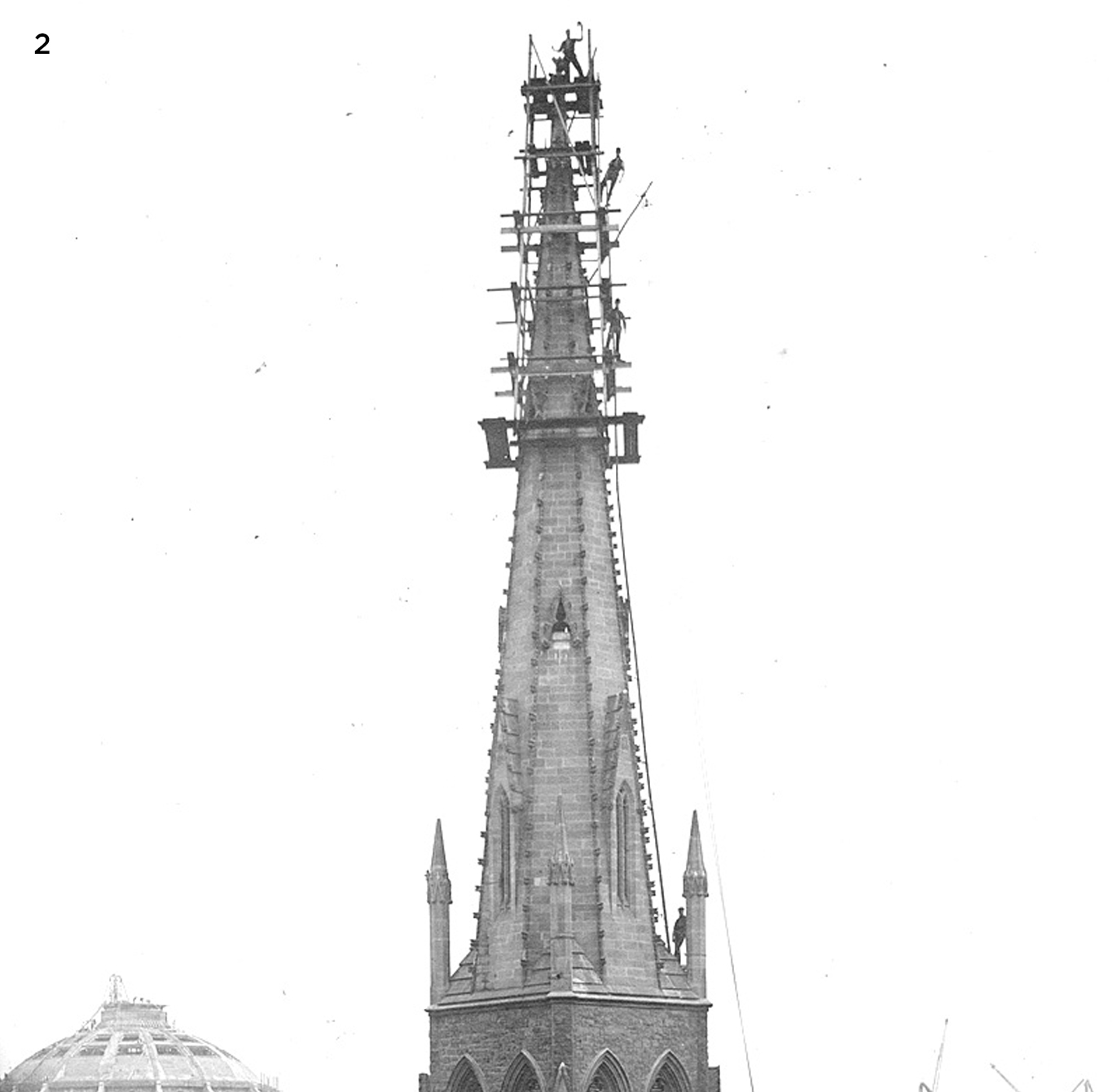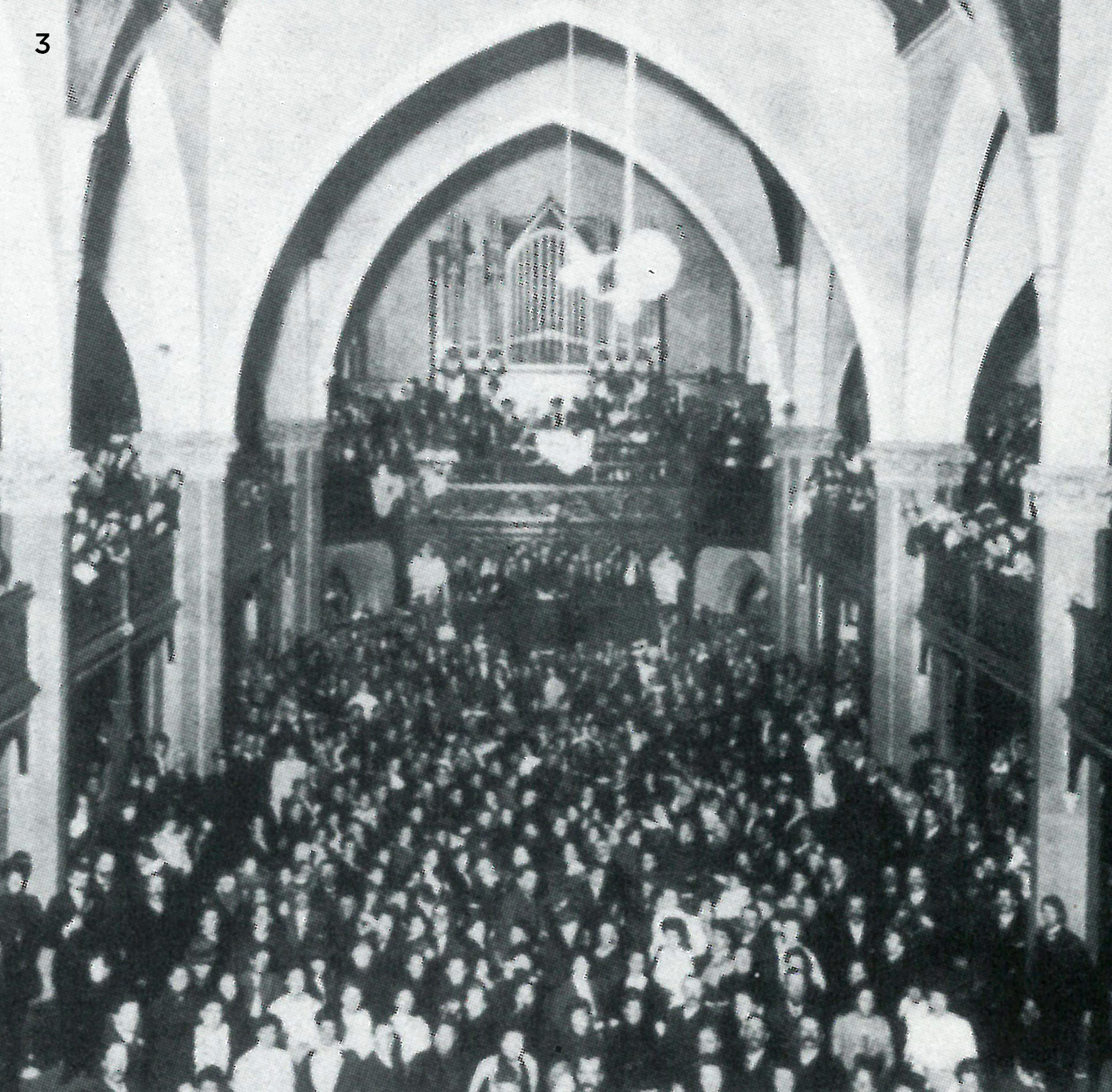Stop A1: Wesley Church



Click on the above to listen to audio of Wesley Church
Guiding the way
Wesley Church was opened on 26 August 1858. Designed by pre-eminent Melbourne architect Joseph Reed, the Gothic Revival style church was completed in less than a year. The magnificent spire was the first significant church spire Melbourne had seen and was reportedly used to adjust ships’ compasses at sea.
A monumental achievement
True to Reed’s vision, the entire church complex incorporating the Manse and School House was finished in 1859. No other buildings were constructed here until 1888, when a Conference Hall was built at the south-west corner of the site. During refurbishment works in 2019, an inscription was found on one of the bricks on the spire. This is thought to have been a tribute to a worker who died during the repair of the spire in 1881.
Presence, perseverance and permanence
There has been a Methodist presence in Melbourne since the early days of European settlement. The first sermon preached in Melbourne was by the Methodist minister, Reverend Joseph Orton, at the home of John Batman on 24 April 1836. Within a year, the first Methodist Church Society had been formed by immigrants from Tasmania, with a membership numbering seven by 1837. From these beginnings, the Methodist Church in Victoria steadily grew in size and influence. The majority of Victorian Methodists were Wesleyans.
The growing congregation
The earliest known Methodist church building in Melbourne opened in March 1839. It was a modest brick structure located on a site at the north-west corner of Swanston Street and Flinders Lane. Little more than a year after its construction, a temporary
minister found the building ‘crowded to suffocation’, and the Church applied to the New South Wales Government for a site on which to build a larger, permanent church. Land was granted at the north-west corner of Collins and Queens streets
and construction commenced in late 1840. The new church could seat 600 members.
Prospering from the gold rush
During the 1840s, the Wesleyan cause prospered. However, this was brought to an abrupt end by the discovery of gold in Victoria in 1851. The gold rush years saw people leave the city for the goldfields, with the dwindling number of city residents having
a substantial impact on the Church.
With property values in the city rising, the Wesleyans were able to sell their Collins Street site in 1857 for a good sum and move to what is now Wesley Place.
The new site in Lonsdale Street, to replace the Collins Street building, had been granted to the Church by the Crown on 28 January 1850. It was located within the block bounded by Lonsdale Street, Exhibition (then Stephen) Street, Little Lonsdale Street
and Russell Street.
Embracing the Gothic Revival style
The design of the church was an outcome of a competition. Sixteen entries were received, with the design of Joseph Reed, the pre-eminent architect of mid-nineteenth century Victoria, selected. Notable as the first substantial Gothic Revival building to be constructed by the Wesleyans, the church was formally opened on 26 August 1858. It became a city landmark and remained the only substantial city church spire until the completion of the Independent Church in Collins Street (now St Michael’s Uniting Church) in 1867.
Uncover more about Joseph Reed here
Image References
- Wesley Church, Lonsdale Street, showing the Princess Mary Club under construction, c.1925. Source: State Library of Victoria, H86.108/63
- Wesley Church spire under restoration, c.1911. Source: Wesley Church Archives
- The interior of the church, c.1925. Source: Annual Report, 1925, reproduced in The Challenge of the City, 1993